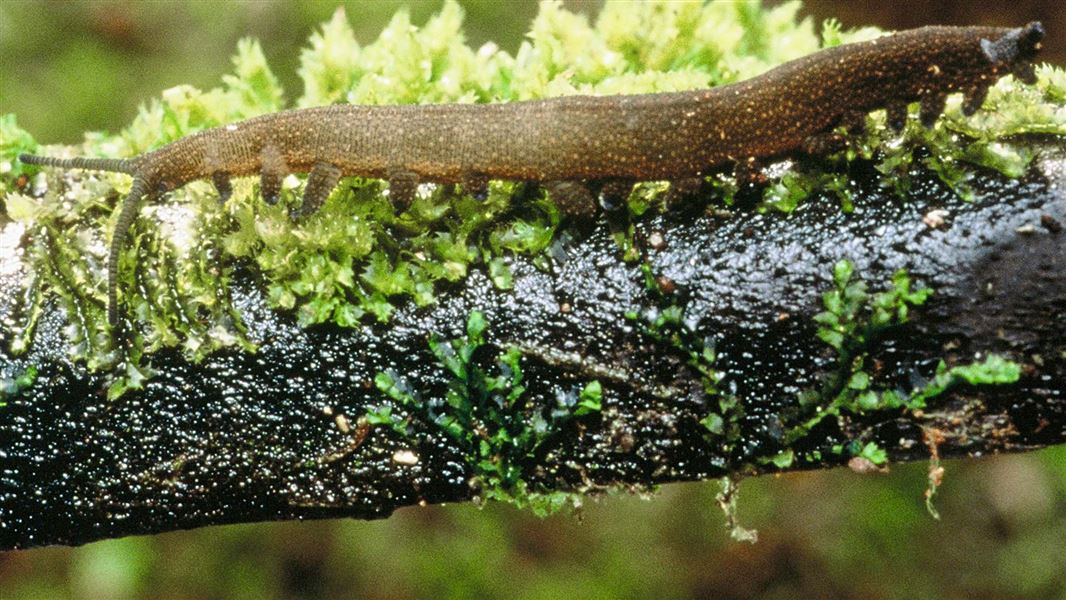They are also a 'missing link' for their similarity to both worms and insects. For this reason they attract much scientific interest—yet they are cryptic, reclusive and not well understood.
Apparent declines in populations as a result of habitat loss from development have led to more attention being focused on what can be done to protect them.
Video
What are peripatus?
Peripatus or velvet worms are invertebrate animals that range in length from 2 to 8 cm. They look a bit like caterpillars and have pairs of stumpy legs along the length of their body.
They are believed to live for about 5 years and the females can produce 10–20 offspring each year. Some species lay eggs, but most hatch them internally and bear live young.
Peripatus are so different from other invertebrates that they have their own phylum: Onychophora. This uniqueness makes them important in studying the evolutionary and geographic relationships of animals.
There are approximately 200 species of peripatus worldwide. In New Zealand, there may be up to 30 different species; however, only 9 species belonging to two genera (Peripatoides and Ooperipatellus) have been described to date.
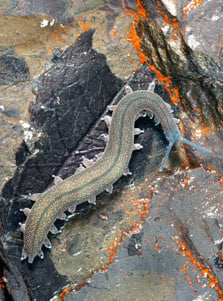
Peripatus are found in most forested parts of New Zealand
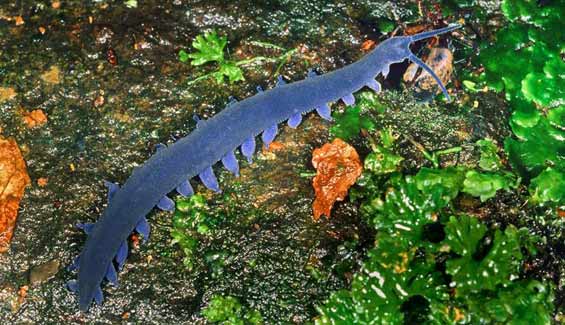
Peripatus look a bit like caterpillars and have pairs of stumpy legs along the length of their body
Species in New Zealand
New Zealand has possibly 30 species of peripatus, but only 9 have been described:
- Peripatoides aurorbis
- Peripatoides suteri
- Peripatoides indigo
- Peripatoides sympatrica
- Peripatoides kawakaensis
- Peripatoides morgani
- Peripatoides novaezealandiae
- Ooperipatellus viridimaculatus
- Ooperipatellus nanus
They appear superficially similar although with 14, 15 or 16 pairs of legs. Ooperipatellus lay eggs rather than bearing live young.
Where to find them
Peripatus are distributed around the equator and southern hemisphere.
They are found in most forested parts of New Zealand, but also linger in remnant patches, scrub and gardens. They are also occasionally found in pasture, alpine and city park sites.
The velvety skin of peripatus has permanently open pores, which means that they can easily dry out. Consequently, they are mostly found in shady, cool and damp areas.
They hide deep within rotting logs and under leaves and debris during the day, venturing out at night to prey on other invertebrates, which they catch with jets of sticky fluid.
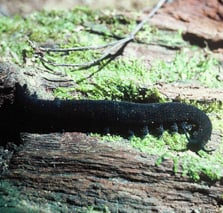
During the day they hide deep within rotting logs and under leaves and debris
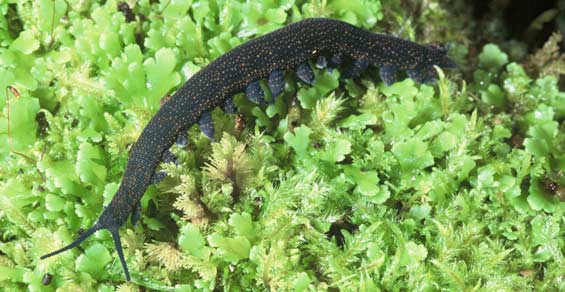
They are called 'living fossils' as they are remarkably unchanged from 500 million years ago
Threats to peripatus
Peripatus are subject to four major threats:
- Habitat loss: The clearing of forests and removal of the rotting logs and stumps that peripatus live in
- Predators: Introduced birds, rats and hedgehogs may eat individuals
- Collectors: Collectors may have an impact both directly, through the removal of adults, and indirectly, by disturbing peripatus habitat
- Insufficient knowledge: Not enough is known about how many species New Zealand has, their ecology and distribution
You can help
Any forest on or near your property may be home to peripatus.
Therefore, you can help by:
- Protecting forest areas by fencing out stock, and controlling browsing and predatory animal pests and weeds
- Enhancing forest areas by planting local native plants, e.g. tree fuchsia (Fuchsia excorticata)
- Considering the need for corridors, linkages and riparian strips
- Retaining fallen trees, logs and forest floor debris, and avoiding breaking apart old rotten logs
- Considering legally protecting the land by gift or sale to create a reserve, or retaining ownership but creating a QEII Trust or Reserves Act covenant
- Volunteering on revegetation projects
- Reporting any sightings to the Department of Conservation
Related links
- Peripatus/ngaokeoke leaflet (PDF, 743K)
- New Zealand peripatus/ngaokeoke report (PDF, 4435K) 2014 report on knowledge, conservation and future research needs of the New Zealand peripatus/ngaokeoke.
- Why invertebrates are important: Understanding the bush
